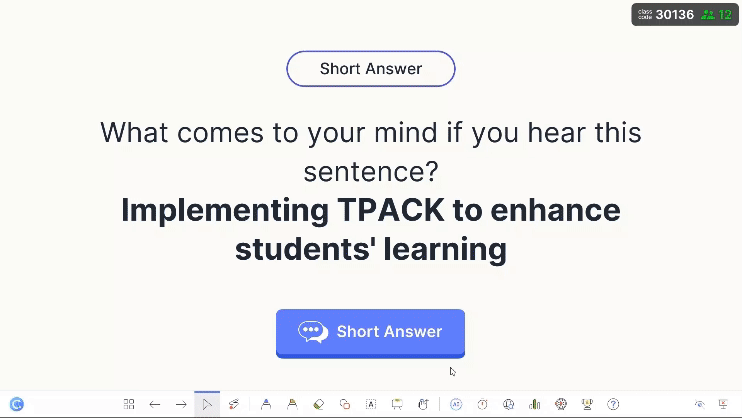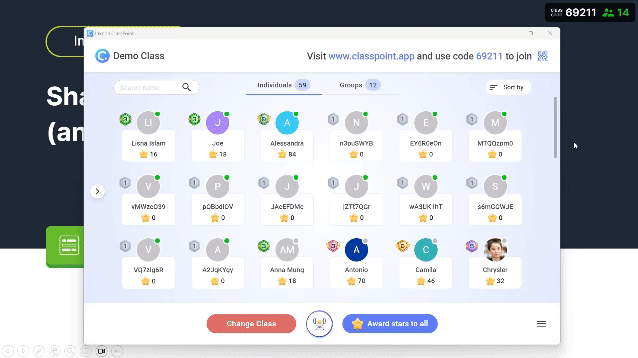More often than not, students tend to focus on their numerical grades when they receive their exam results. While this is understandable, it often leads them to overlook valuable learning opportunities that assessments can provide.
Exam wrappers, developed by Marsha Lovett to address poor study habits, are brief reflection exercises that help students analyze their performance, identify strengths and weaknesses, assess study strategies, and recognize recurring mistakes.
These activities serve as an understanding check, allowing students to reflect on what they truly grasp beyond just the test score.
By integrating exam wrappers into the classroom, particularly after summative assessments, you can shift the focus from grades to meaningful growth and improvement.
Why Use Exam Wrappers: More Than Just Grades
Exam wrappers let your students look beyond their scores by encouraging reflection on their preparation for assessments.
Research has shown that exam wrappers foster metacognitive awareness through thought-provoking and open-ended questions. This process helps your students focus on what they know and how they learn most effectively.
Additionally, exam wrappers enhance exam readiness by pinpointing knowledge gaps, empowering them to address these weaknesses and improve their academic performance.
But while exam wrappers are primarily used for reflection, they offer deeper benefits beyond just reviewing mistakes. Here are some key benefits of using exam wrappers and how they can impact student learning:
| Benefit | How It Helps Students | Example Questions for Exam Wrappers |
|---|---|---|
| Encourages Self-Regulation | Helps students take ownership of their learning and study habits. | How did you prepare for this exam, and what would you do differently next time? |
| Reduces Test Anxiety | Shifts focus from grades to progress, fostering a growth mindset. | What parts of the exam felt easiest/hardest, and why? |
| Reveals Misconceptions | Helps students recognize gaps in their understanding. | Which question surprised you the most, and what does that tell you about your understanding? |
| Enhances Long-Term Retention | Encourages deeper processing of material instead of rote memorization. | What study strategies helped you remember key concepts best? |
How to Integrate Exam Wrappers Into Your Teaching
Usually, exam wrappers are given in the form of a survey before and after your students receive their graded exams. Below are some tips to help you effectively incorporate exam wrappers into your teaching practice.
1. Before the Exam
Integrating exam wrappers before an assessment helps your students prepare strategically. Have them set clear goals, like allocating time for specific topics or identifying areas needing focus. Encourage self-assessment by asking students to evaluate their confidence levels and anticipate challenges.
Incorporate Bloom’s Taxonomy by having them create one question per level, from recall to higher-order tasks like analysis or evaluation. This reinforces their understanding and prepares them for various exam questions.

Prompt them to consider past assessments and predict obstacles such as time management or test anxiety. Ask them to outline a study plan detailing resources and techniques they will use, like flashcards or practice tests. By combining goal setting, critical thinking, and planning, students can approach the exam with confidence.
2. After the Exam
You can encourage your students to reflect on their exam performance and the areas they find challenging. This will motivate them to strategize more effectively for future assessments.

Consider using tools like ClassPoint for in-class or digital reflection. Its Short Answer activity allows you to collect submissions for exam wrappers such as:
- What did you do to prepare for this exam?
- Reflecting on their preparation methods helps students evaluate whether their study strategies were effective or need improvement.
- Which types of questions or topics were most challenging for you, and why?
- This encourages students to pinpoint specific areas of difficulty, whether it’s the content itself or the format of the questions.
- What kind of mistakes did you make (e.g., content errors, misreading, rushing)?
- Identifying the nature of their mistakes allows students to distinguish between gaps in understanding and test-taking habits.
- What will you do differently next time to prepare more effectively?
- This prompts students to translate their reflections into a concrete plan for improvement, fostering self-directed learning.
More on Use Interactive Short Answer Questions to Transform your PowerPoint Presentations.
3. Motivation and Participation
Studies show that offering course credit or participation points increases the completion rate of exam wrappers. In contrast, completion rates tend to be lower when exam wrappers are optional and ungraded activities.

To encourage greater student participation, it is recommended to assign a small percentage (e.g., 1–3%) of the total course grade to the completion of exam wrapper exercises. Try using ClassPoint’s award star and leaderboard ranking features to gamify your students’ learning experience.
Common Mistakes Students Make When Using Exam Wrappers
Although exam wrappers can improve study habits, students sometimes make mistakes that limit their effectiveness. Recognizing these common errors can help educators guide students toward more meaningful reflections:
- Superficial Responses: Students often provide vague or generic answers without deeply analyzing their performance or study habits. Encourage them to give specific examples and reflect critically on their preparation.
- Focusing Only on Weaknesses: While it’s essential to identify mistakes, students should also acknowledge their strengths. This helps build confidence and reinforces successful study habits.
- Ignoring Recurring Patterns: Students often fail to recognize repeated errors, such as misreading questions or rushing through problems. Encourage them to identify these patterns and develop a plan to address them in future assessments.
- Overlooking Study Strategy Evaluation: Many students focus only on the content they missed rather than evaluating the effectiveness of their study methods. Help them assess whether their chosen techniques adequately prepared them for the exam.
- Lack of Follow-Through on Improvement Plans: While students may identify areas for improvement, they often fail to implement changes in future study sessions. Consider setting follow-up checkpoints to ensure they apply their reflections effectively.
By addressing these common mistakes, you can ensure that your students gain the full benefits of exam wrappers, leading to more effective study habits and improved academic performance.
The Bigger Picture: Cultivating Self-Directed Learners
Exam wrappers are more than just a task. They represent a mindset shift that empowers your students to take ownership of their learning. By reflecting on their performance, they identify areas of strength and opportunities for improvement, fostering self-awareness and intentionality in their study habits.
Ultimately, exam wrappers prepare them to navigate challenges both inside and outside the classroom so they can become self-directed learners.
FAQs
What are exam wrappers, and how do they work?
Exam wrappers are short, structured reflection activities that students complete before or after an exam. They prompt learners to evaluate their study strategies, identify mistakes, and plan improvements, which shifts focus from just the grade to deeper learning.
Why should teachers use exam wrappers in the classroom?
Teachers use exam wrappers to help students become more self-aware, improve their metacognitive skills, and take ownership of their learning. Research shows that the regular use of exam wrappers can enhance academic performance and promote long-term study success.
When is the best time to use exam wrappers with students?
Exam wrappers are most effective when used both before and after an exam. Before the exam, they help students plan and self-assess. After the exam, they guide reflection on mistakes, preparation, and future improvements.
How can I introduce exam wrappers effectively in my class?
Start small by integrating exam wrappers as a quick pre/post-exam survey or activity. Tools like ClassPoint’s Short Answer feature make it easy to collect responses during class. For higher participation, assign a small grade weight (1–3%) to the activity.
Do exam wrappers really improve student performance?
Yes, studies have shown that exam wrappers encourage reflective thinking and better study habits, which can lead to improved exam scores over time. They’re especially effective for fostering self-directed learning in students of all levels.

